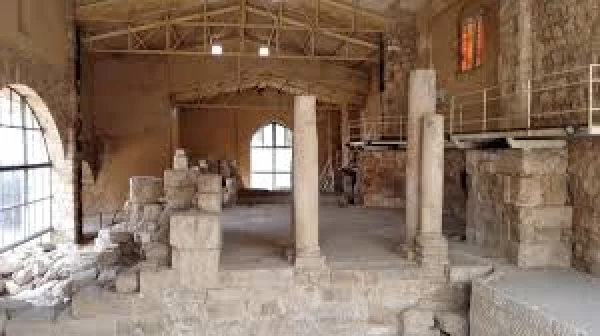
Madaba Archaeological Museum
Madaba Archaeological Museum
The Madaba Archaeological and Folk Museum is different from others in Jordan, as it is based mainly on small old houses that witnessed the real life of the ancestors in a southern city with different population groups. The original headquarters was converted into a folklife museum in 1978 and houses traditional houses in the style of the ancient horizontal masonry.
The folk house is the main section of the museum, which is unique in that it completely retains its original parts on a paved floor that resembles a large canvas full of inscriptions and drawings from the Roman, Ammonite, and Byzantine eras, in addition to varying geometric shapes on the walls showing colorful circles and rectangles of varying sizes, and images of animals and plants that were valuable in previous eras.
At the entrance to an opposite room, small trees at the four corners of the room, a corridor branching into three sections titled “Heritage and History,” “Ethnology,” and “Encounter,” summarizing Jordanian folk costumes and clothing, women's jewelry used on occasions, traditional household items, and, in the last section in particular, pottery pieces discovered in the same place.
In 1987, the Department of Antiquities in Madaba acquired additional ancient houses and formed the nucleus of a new museum adjacent to the previous one before joining them together, supporting the site with other mosaics transferred from surrounding areas, a variety of crowns, and the preservation of rock pillars associated with events in the area.
In its current form, the museum houses pottery, copper and glassware from the Roman, Byzantine and Islamic eras, accompanied by explanatory materials. The “Umm al-Waleed” cone-shaped piece with antique stones is an important content after it was proven to date back to the sixth century AD and was preserved when it was discovered at a restoration institute in Geneva. Among the exhibits are silver coins, Umayyad gold dinars and a map of the city with intricate inscriptions and symbols.
In a video corner, the museum presents a presentation on the city of Madaba, covering the movement of tribes to the city and its revitalization in 1880 AD, finding artifacts that tell a history dating back to 1200 BC, and discovering a historical cemetery and objects related to kings in previous eras.














